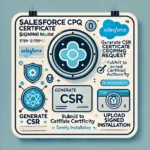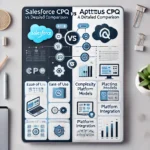Journey and Campaign in Salesforce-In Salesforce, understanding the distinctions between “journey” and “campaign” is crucial for effective customer relationship management (CRM) and marketing strategy. This blog post explores the definitions, functionalities, use cases, and frequently asked questions (FAQs) regarding journeys and campaigns in Salesforce.
What is a Campaign in Salesforce?
A campaign in Salesforce is a specific marketing initiative or project designed to achieve a particular marketing goal or objective. It serves as a container for organizing and managing marketing efforts, such as advertising campaigns, email marketing, events, or promotional activities.
Key Features of Campaigns:
- Objective-driven: Each campaign is created with a specific marketing goal, such as lead generation, brand awareness, or customer retention.
- Campaign Members: Contacts, leads, or person accounts can be associated with campaigns as campaign members, allowing tracking of engagement and response.
- ROI Tracking: Enables marketers to track and measure the effectiveness of campaigns through metrics like conversion rates, click-through rates, and ROI.
What is a Journey in Salesforce?
A journey in Salesforce refers to a series of marketing interactions and touchpoints that a customer experiences across various channels and stages of their lifecycle. Journeys are typically automated and aim to nurture leads, engage customers, or drive specific actions based on predefined criteria and triggers.
Key Features of Journeys:
- Automation: Journeys automate marketing workflows and interactions based on customer behavior, preferences, or predefined triggers.
- Multi-channel Engagement: Engages customers across multiple channels such as email, SMS, social media, and advertisements.
- Personalization: Allows for personalized customer experiences by delivering relevant content and messages based on customer data and interactions.
Differences Between Journey and Campaign
1. Purpose and Scope:
- Campaign: Focuses on specific marketing initiatives or projects with defined start and end dates.
- Journey: Continuous and automated engagement throughout the customer lifecycle, focusing on nurturing relationships and driving conversions.
2. Automation and Workflow:
- Campaign: Typically involves manual execution and monitoring of marketing activities.
- Journey: Automated workflows triggered by customer actions, events, or predefined criteria.
3. Engagement Channels:
- Campaign: Uses various channels for outreach but managed within the context of the campaign.
- Journey: Utilizes multi-channel engagement to deliver consistent and personalized customer experiences.
4. Measurement and ROI:
- Campaign: Measured based on specific campaign metrics and ROI related to campaign goals.
- Journey: Evaluated based on customer journey analytics, engagement metrics, and overall impact on customer relationships.
Use Cases of Journey and Campaign in Salesforce
Campaign Use Cases:
- Product Launch: Creating awareness and generating leads for a new product or service.
- Event Promotion: Driving attendance and engagement for webinars, conferences, or trade shows.
- Seasonal Promotions: Running holiday sales or promotional offers to attract and convert customers.
Journey Use Cases:
- Onboarding: Guiding new customers through the product or service adoption process.
- Lead Nurturing: Moving prospects through the sales funnel with personalized content and follow-ups.
- Customer Retention: Engaging existing customers with loyalty programs, personalized offers, and feedback loops.
FAQs about Journeys and Campaigns in Salesforce
Q1. Can a campaign include multiple journeys?
- A1. No, campaigns and journeys are distinct entities in Salesforce. Campaigns focus on specific marketing initiatives, while journeys are continuous automated workflows based on customer interactions.
Q2. How can I measure the success of a journey in Salesforce?
- A2. Success metrics for journeys include conversion rates, engagement levels, customer retention, and overall impact on customer satisfaction and loyalty.
Q3. What is the difference between a campaign member and a journey participant?
- A3. A campaign member is a contact or lead associated with a campaign for tracking purposes, while a journey participant is a customer or prospect actively engaged in a journey’s automated workflow.
Q4. Can journeys be integrated with external systems and platforms?
- A4. Yes, Salesforce allows integration of journeys with external systems through APIs and connectors, enabling data synchronization and workflow automation across platforms.
Q5. How can I personalize campaigns and journeys in Salesforce?
- A5. Personalization in Salesforce involves leveraging customer data, segmentation, and dynamic content to deliver tailored messages and experiences through campaigns and journeys.
Conclusion
Understanding the difference between journeys and campaigns in Salesforce is essential for optimizing marketing efforts, enhancing customer engagement, and driving business growth. While campaigns focus on specific marketing initiatives with measurable outcomes, journeys enable automated, personalized customer interactions across multiple channels throughout the customer lifecycle. By leveraging both campaigns and journeys effectively, organizations can create cohesive marketing strategies that resonate with their target audience, foster meaningful relationships, and achieve sustainable business success.


